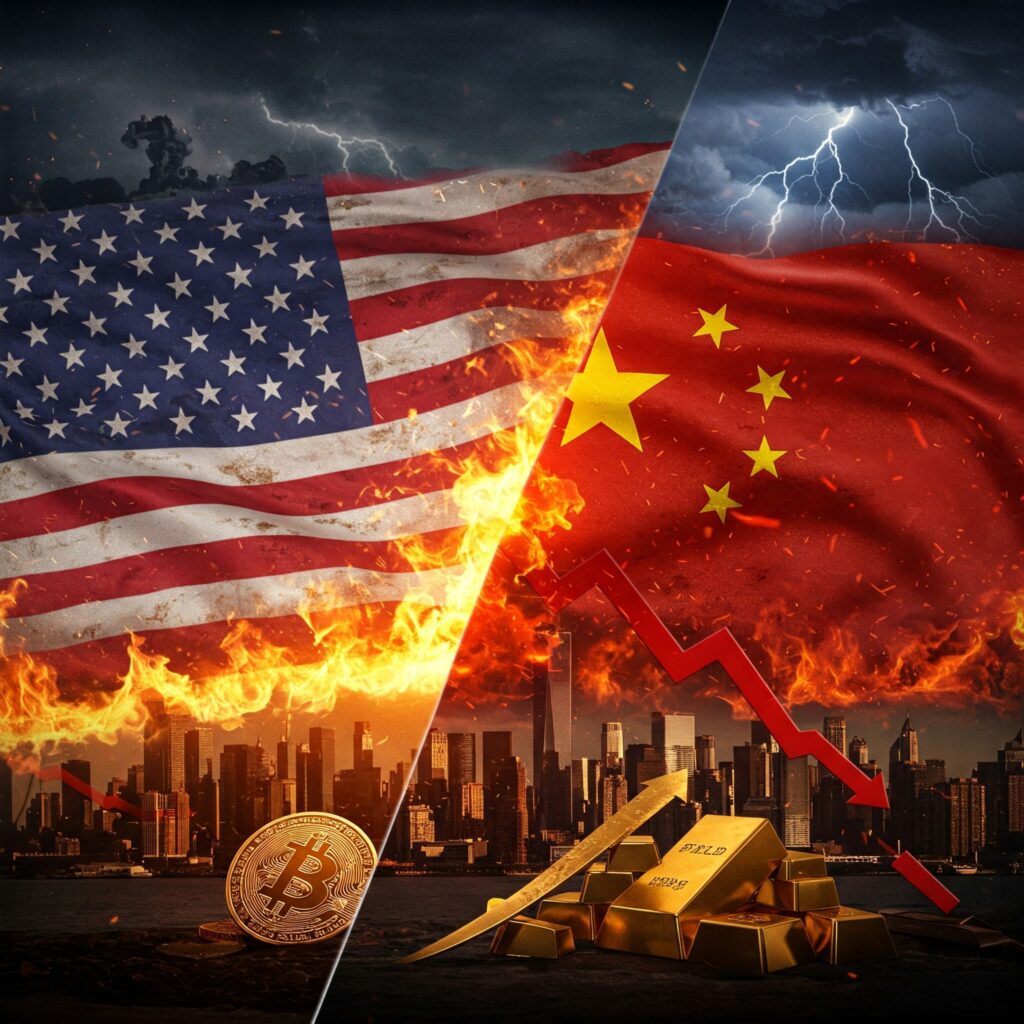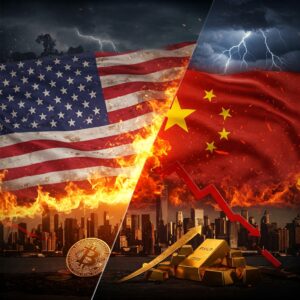US-China Trade War Escalation: Tariffs Spark Market Volatility & Crypto Crash
In a stunning escalation of the US-China trade war, China has significantly raised tariffs on a vast array of American imports, increasing rates from 34% to an incredible 84%. This is in direct retaliation against the massive 104% tariff the United States recently levied on Chinese imports. The escalating economic conflict between the world’s two biggest economies has reverberated through global markets, with a meltdown that is spilling over to both traditional finance and digital assets.

US-China Trade War Escalation: Tariffs Spark Market Volatility & Crypto Crash
How China’s 84% Tariff Retaliation Intensifies Global Economic Strain
The US-China trade war has entered a new, and more dangerous, phase. Beijing’s response to raise tariffs on U.S. goods is a strategic measure aimed at offsetting Washington’s own recent and sweeping 104 percent tariff on a wide array of Chinese imports.
China’s Ministry of Commerce issued a statement earlier this week announcing the tariff increase, and stressing that it was necessary to protect Chinese economic interests as well as to counter what the ministry characterized as “unilateral and protectionist measures” by the United States government. The tit-for-tat escalation reflects a deepening rift between the two economic powerhouses and raises fears of a prolonged economic conflict with global repercussions.
Bitcoin Plummets Below $76K: Crypto’s Vulnerability to Geopolitics
One of the first sectors to exhibit a robust reaction to the most recent developments of the trade war was cryptocurrency. Bitcoin, the world’s top digital currency, faced a sharp crash, dipping under the important $76,000 support level. The drop comes out to a 30% decline since its recent all-time maximum and highlights the asset’s sensitivity to macroeconomic change and geopolitical instability.
Cryptocurrencies, widely marketed as “safe havens” during stress in traditional markets, are being hit just as hard in the current environment. As investors are dealing with an increasing level of uncertainty, the demand for riskier digital assets has slumped dramatically.
Altcoins Follow suit: Ethereum, Solana Face Double-Digit Losses
The escalating volatility in both traditional and digital financial markets is a symptom of a broader erosion in investor confidence. Market participants are becoming ever-more risk averse and running to find shelter in lower-risk assets, including gold, the US dollar, and government bonds.
At the same time, speculative and high-growth assets — cryptocurrencies and tech stocks, for example — are experiencing massive outflows. This radical change in investor behavior highlights the gravitas of the current economic situation. The perfect storm of uncertainty over international trade policy, inflation, interest rates and geopolitical tensions looks set to derail economic recovery and market stability.
Traditional Markets in Turmoil: Dow Jones and S&P 500 Nosedive
This is a time for both retail and institutional investors to be prudent and diversified. Analysts advise rebalancing portfolios into more stable assets and hedging against downside risk in recent weeks. In the cryptocurrency sector, this could translate to decreasing exposure to highly speculative altcoins and re-allocating to more mature assets like Bitcoin and Ethereum
. Key support and resistance levels for Bitcoin are being closely monitored by technical analysts. A drop below $72,000 could spark a fresh round of liquidations. On the other hand, a sustained recovery north of $80,000 might indicate a return of investor confidence. But until there is a stabilization in the macroeconomic backdrop, the price action is likely to be choppy and uncertain.
Investor Exodus to Safe Havens: Gold and Bonds Surge
The escalating trade war is adding to wider economic uncertainty that is increasingly affecting investment strategies and financial planning. Businesses are reluctant to make new capital investments, worried about shifts in the regulatory landscape and disruptions to the supply chain. Consumers, confronted with potential price increases from tariffs, might reduce discretionary spending, creating another drag on economic momentum.
The tariff battle economists fear could drag both the US and Chinese economies down into slower growth, or even recession, if the two can’t de-escalate tensions soon. So far, the International Monetary Fund, or IMF, has already cut its global growth forecast, pointing to trade tensions as a top threat.




Ephesus tours Turkey Turkey tour packages are exceptional. The cuisine alone is worth the trip – so delicious! https://beinmarkets.com/?p=17213
**mind vault**
mind vault is a premium cognitive support formula created for adults 45+. It’s thoughtfully designed to help maintain clear thinking
**breathe**
breathe is a plant-powered tincture crafted to promote lung performance and enhance your breathing quality.
Hmm it appears like your website ate my first comment (it was super long) so I guess I’ll just sum it up what I had written and say, I’m thoroughly enjoying your blog. I as well am an aspiring blog blogger but I’m still new to everything. Do you have any suggestions for first-time blog writers? I’d certainly appreciate it.